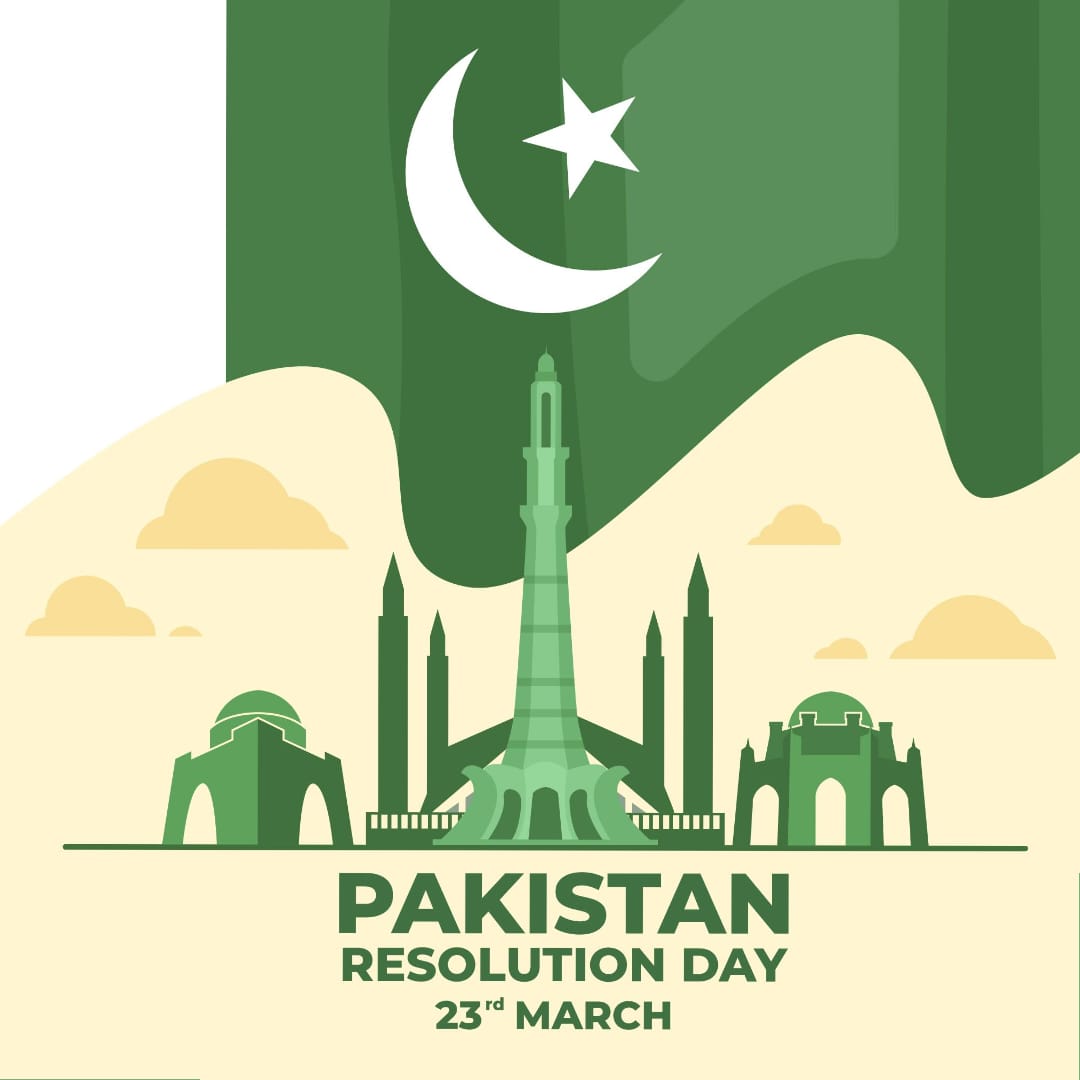This year on March 23rd, PAKISTAN is going to celebrate the 81st anniversary of Pakistan Day, which is the Memory of Pakistan Resolution commonly called Lahore Resolution (23rd March 1940). Lahore Resolution was the blueprint for the formation and emergence of Pakistan on the map of the world.
The venue of this meeting was Minto Park close to Badshahi Masjid, Lahore. On 23rd March, the Chief Minister of A.K. Fazul Haq headed this prestigious history-changing Resolution. Khaksaar tragedy took place right before a few days from this meeting. Quaid e Azam headed towards Lahore on the 21st of March to attend the meeting and went to the hospital to console the victims of the Khaksaar incident.
Minar-e Pakistan also called Pakistan Minare is a minaret (a kind of pinnacle) located in Iqbal Park, Lahore. It was constructed to adore the prestigious event of the Lahore Resolution. This landmark represents a blooming blossom and mirrors the delight of freedom.
The Resolution was solely a total of five paragraphs, each paragraph was a single sentence long. Despite it was clumsily phrased yet conveyed the message effectively.
In this meeting, it was settled that it is the viewed perspective on this meeting of the All-India Muslim League that no sacred arrangement would be serviceable in this country or satisfactory to Muslims except if it is planned on the accompanying essential rule, in particular, that geologically bordering units are outlined into locales which ought to be so established, with such regional corrections as might be vital, that the zones in which the Muslims are mathematically in a lion’s share, as in the North-Western and Eastern Zones of India, ought to be gathered to comprise ‘Free States’ in which the constituent units will be self-sufficient and sovereign.
It was clearly stated that the two respective majority communities belong to two different civilizations that are based mainly on conflicting ideas and conceptions. Their life concepts never seemed to be correlating. It is quite clear that Hindus and Muslims derive their inspiration from different sources of history. They have different epics, different heroes, and different episodes in the past. Very often the hero of one is a foe of the other, and likewise, their victories and defeats overlap.
The only ambiguity left in this resolution was that the name Pakistan was not used in the resolution and the official name of the resolution was Lahore Resolution.
The unique administration of the Quaid and the responsibility and commitment of the adherents made it workable for them to accomplish a free state within seven years of their battle, and that too when a sacred group of the Muslim community was against this idea.
The country of more than 210 million individuals, which appreciates a geo-strategic and naturally blessed area since its commencement in 1947.
The reason for the celebration of this tremendous occasion is the affection, appreciation, and gratefulness for being honored with a land where they could arrange their lives in a specific way as per Islamic norms and culture.
Pictures of the founder of Pakistan Quaid e Azam Muhammad Ali Jinnah and other conspicuous heads of the Independence battle are shown on structures and their appearances are imprinted on shirts and buildings.
The Pakistan Day Parade otherwise called the National Day Joint Services Parade is a yearly occasion held at Shakarparian in the Federal capital of Pakistan, Islamabad on the event of Pakistan Day. It explicitly commends the commemoration of the Lahore Resolution of 1940. It is administered by both, the President, and the Prime Minister of Pakistan.
The parade ceremony first held was in 1974, its initiation in 1974, and then in 2008, it was delayed with a gap of 7 years, one after the other. The venue of the parade used to change from time to time. The venues incorporate Jinnah Avenue, Constitution Avenue, and Racecourse Grounds located in Rawalpindi. Over about fourteen days preceding the parade in 1980, A scheme to kill President Muhammad Zia-ul-Haq by Major General Tajammul Hussain Malik during the function was disclosed. In 2008, the parade was suspended for an encompassing timeframe because of the developing scenario of terrorism in the country and fears that an assault on the procession was irreversible.
Following a 7-year break, it was rescheduled in 2015 on the 75th anniversary. This choice was made to some extent to the commemoration’s importance alongside the achievement of Operation Zarb-e-Azb, a remarkable mission by the Pakistan Army.
The 80th parade anniversary dropped in 2020 because of the pandemic of the Covid in Pakistan.
Pakistanis commend this paramount day with excitement, enthusiasm, and intensity, additionally, they pray for the prosperity and wellbeing of their cherished country.



